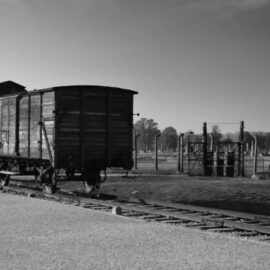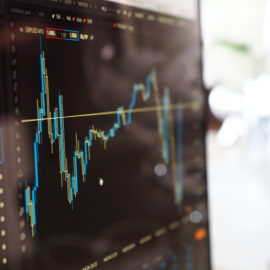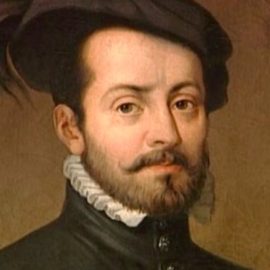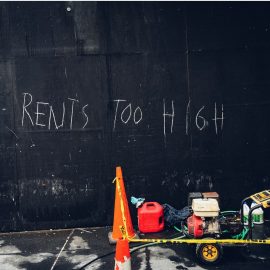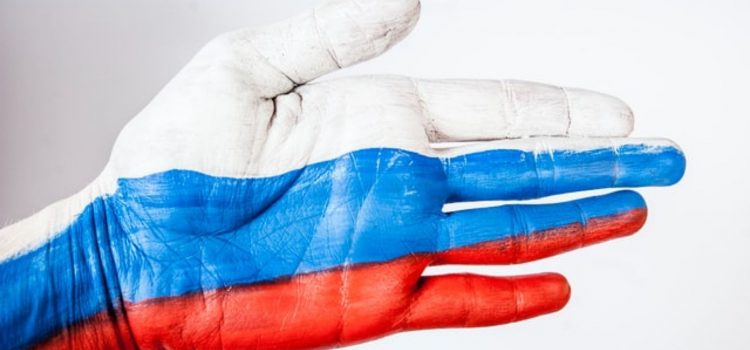
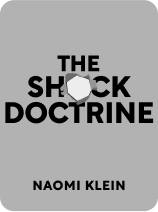
This article is an excerpt from the Shortform book guide to "The Shock Doctrine" by Naomi Klein. Shortform has the world's best summaries and analyses of books you should be reading.
Like this article? Sign up for a free trial here .
Who instituted Russia’s shock therapy? How did economic shock therapy affect the Russian economy?
In Russia, shock therapy didn’t have the promised results. Yeltsin swore that there would be around six bad months, but by the end of his year of emergency powers, Russia would recover and be a world superpower again. However, a year later, millions of Russians had lost their life savings and a full third of the people had fallen into poverty.
In this article, you’ll learn how shock therapy unfolded in Russia, and what happened in its aftermath.
Russia and Shock Therapy
In 1991, Mikhail Gorbachev was president of the Soviet Union. Despite the fact that the Cold War had just ended, Gorbachev was so likable and had made such remarkable democratic reforms that he was almost universally loved in the West.
A major part of his plan was to create a mixed economy in Russia. It would be based largely on free-market capitalism, but with a strong social safety net and certain industries remaining under government control. His design was closely based on the Scandinavian model, which Gorbachev called a socialist beacon for mankind.
However, when Gorbachev arrived at that year’s G7 conference, the major countries of the world all demanded that Russia undergo a course of economic shock therapy that would be even faster and harsher than Poland’s. They’d offer no foreign aid at all unless Russia consented to that shock program.
Gorbachev knew that the only way to impose such drastic and unpopular changes would be with force. It seemed that other major countries and the media knew it too, though it didn’t seem to bother them—The Economist and the Washington Post both urged Gorbachev to use Chile’s Pinochet as an example for how to rule Russia.
Gorbachev was unwilling to go to those extremes, but Boris Yeltsin—one of his political opponents—had no such reservations. Three painful shocks followed that fateful G7 summit: one political, one economic, and one psychological.
The First Shock: The Soviet Union Dissolves
Boris Yeltsin, who by 1991 had abandoned the Communist party and run as an independent, was the current president of Russia. However, his power was overshadowed by Gorbachev, who was president of the entire Soviet Union. Thus, in order to realize his dream of becoming the Russian Pinochet, Yeltsin needed to increase his own power and get Gorbachev out of the way.
His opportunity came in August of 1991, when the deposed Communist party unsuccessfully tried to depose him. A group of party members drove tanks up to the Russian parliament building and threatened to attack the democratically-elected parliament. Yeltsin, along with a large group of Russians determined to protect their new democracy, faced down the tanks from the steps of the Parliament building. Eventually, the tanks turned and drove away without harming anyone.
The event was a huge boost to Yeltsin’s popularity, and he leveraged his newfound clout with a brilliant piece of political maneuvering: He formed an alliance with two other republics in the Union. That new alliance effectively dissolved the Soviet Union, forcing Gorbachev to resign.
Most Russians had never known life without the Soviet Union, and its sudden dissolution came as a huge shock. That was the first of the three shocks that would remake Russia from the ground up.
The Second Shock: Chicago-Style Shock Therapy
Boris Yeltsin turned to Jeffrey Sachs, who was riding high on his victories in Bolivia and Poland, for advice and funding. Sachs promised that, in exchange for Russia’s pledge to undergo whatever economic shock therapy the world market prescribed, he could get them somewhere in the neighborhood of $15 billion in aid. However, that promised money never arrived.
As always, the transition to Friedman-Esque free-market capitalism couldn’t be done democratically. Therefore, Yeltsin made the bold move of asking Russia’s parliament to grant him one year of emergency powers. He promised that, if he could pass laws unilaterally instead of bringing them to parliament to vote, he could fix the economic crisis and give Russia one of the largest economies in the world.
The emergency powers would effectively make Yeltsin a totalitarian ruler, something that should have been terrifying to Russia’s new democracy. However, he was still popular for his actions during the Communists’ attempted coup, and the country desperately needed foreign aid. Parliament accepted his terms.
With his new powers, Yeltsin immediately put together a team of Russian economists who, though they hadn’t trained at the Chicago School, were such big fans of Milton Friedman that the Russian press started calling them “the Chicago Boys.” Their policies, predictably, were focused on deregulation, privatization, and reducing government spending—classic shock therapy.
In addition to his special emergency powers, President Yeltsin was also enjoying the backing of the US government. A team of “transition experts” took on a variety of projects to aid Russia’s move to full-blown capitalism, including founding a stock exchange and writing up privatization documents. USAID also awarded a contract to Harvard University, which sent teams of lawyers and economists over to observe and help Yeltsin’s progress.
Only a week after Gorbachev resigned as president of the Soviet Union, Yeltsin and his “reformers” began the economic shock therapy, which was the second of the three major shocks to the Russian people. Already exhausted and bewildered from the sudden collapse of the Soviet Union, they couldn’t hope to keep up with the dizzying array of changes being thrown at them—which was exactly the point.
Joseph Stiglitz, who was at the time the chief economist at the World Bank, summed it up neatly. He said that pushing such reforms required a “blitzkrieg” approach immediately after a major transition or upheaval, when the people were still too disoriented to protect their own interests. That, in essence, is the shock doctrine.
The Third Shock: Yeltsin Emulates Pinochet
Yeltsin and his economists originally tried to present economic reform and democratic reform as two parts of the same project. Soon, however, it became clear that democracy and free-market capitalism were in direct opposition to each other.
Eventually, the Russians snapped out of their stupor and demanded that Yeltsin stop his harmful policies. In March 1993, the parliament voted to strip Yeltsin of his emergency powers. The president had used up his year and then some, and far from delivering the salvation he promised, people were more poor and desperate than ever.
Yeltsin retaliated by declaring a state of emergency, which restored his unilateral power, and by trying to dissolve Parliament—which would be like a US president trying to get rid of Congress. He didn’t get the votes he needed to pass his mandate, but a narrow majority of the population did say that they approved of his economic reforms, so Yeltsin claimed victory anyway.
Shortly thereafter, the president issued a decree saying that parliament was dissolved and the constitution abolished, effective immediately. A couple of days later, parliament—which Yeltsin did not have the authority to dissolve—retaliated by voting overwhelmingly to impeach him. It was inevitable that the power struggle would turn into armed conflict.
Soon enough, it did. Yeltsin—still backed by US money and material—surrounded the parliament building with armed troops and had the power, heat, and phone lines cut off. Popular support for parliament, and against Yeltsin’s strongman tactics, grew by the day. Many people on both sides were pushing for emergency elections for both the presidency and parliament, letting the people decide who should be in power.
However, around this time, Poland’s Solidarity party suffered a crushing electoral defeat. Yeltsin then knew that he couldn’t risk an election, because he would almost surely lose.
Instead, he gave up even the illusion of being a democratic leader and shifted to full-blown junta tactics. His troops stormed and burned the parliament building, and killed or captured everyone inside.
Shortly thereafter, Russia was under total dictatorial rule and the Russian Chicago Boys were free to make all the Friedman-style laws they wanted, including massive budget cuts, more privatization, and the removal of price caps on basic staples like bread. This was the third and final shock for the Russian people.
Yeltsin’s Falkland War
Yeltsin’s coup and the intensified shock therapy he forced onto the country were widely cheered in the West, even as violence and human rights violations mounted. However, they had one major problem looming: Yeltsin’s popularity was plummeting. At their lowest point, his approval ratings dipped into single digits.
It was a recipe for a revolution, and if Yeltsin were ousted then whoever replaced him would probably reverse many of the changes that were making Russia so beloved by corporations and investors. He needed a way to win the people back. This time Yeltsin took a page from Thatcher’s book instead of Pinochet’s: he started a war.
In December 1994, Russia went to war against the Republic of Chechnya in an effort to put down its independence movement. Russian troops easily claimed the already abandoned presidential palace in Grozny, the capital of Chechnya, and Yeltsin declared victory. It boosted his popularity, though not as much as his supporters had hoped, and he only narrowly won the next election, largely thanks to massive donations from oligarchs—well beyond the legal limits—and nonstop coverage on oligarch-owned TV stations.
Deregulating Russian Industries
With the threat of removal gone, Yeltsin’s pseudo-Chicago economists moved on to the most controversial (and profitable) part of their plan: They would cheaply sell major national industries to wealthy buyers—oligarchs who plotted with politicians to purchase public assets at a steep discount.
For example, Norilsk Nickel, which at the time produced a fifth of the nickel in the world, was sold for $170 million, and its yearly profits reached $1.5 billion soon after. Yukos, a large oil company, was sold for $309 million, and now brings in more than $3 billion a year.
The biggest slap in the face may have been the fact that these companies were bought using public funds. Yeltsin’s government sold these companies to wealthy Russian oligarchs, who paid for them out of bank accounts created by government officials and funded by public money.
Russia also became a massively profitable market for wealthy outsiders. Many investment banks raced to set up dedicated Russian mutual funds, and The Wall Street Journal teased the possibility of 2,000% returns on investments in just three years.
The Outcomes of Russian Shock Therapy
As seen in many other countries, Russia’s shock therapy caused a huge transfer of wealth to the already wealthy elites, and the common people suffered.
Yeltsin ousted Gorbachev and dissolved the Soviet Union in 1991; by 1998, over 80% of Russian farms were bankrupt and some 70,000 factories had closed. The number of impoverished Russians had gone from around 2 million to 74 million. Alcohol use doubled during the shock therapy years, and hard drug use increased by an estimated 900%. The suicide rate doubled, and the homicide rate quadrupled.
Furthermore, Yeltsin’s Moscow may have been one of the most openly unequal cities in the world. In one area, oligarchs drove luxury cars while guarded by their own private mercenary armies. In another, people had to read by candlelight.
And, naturally, looting a country as large and wealthy as Russia took extreme acts of violence. The Chechen War alone killed an estimated 100,000 people. Policies that enrich the few at the cost of the many can only survive if democracy is repressed.
Even so, no matter how openly Yeltsin flouted democracy, his time as president was portrayed in the West as “transitioning to democracy.” Furthermore, world leaders and major media outlets seemed blind to the fact that these weren’t isolated incidents caused by corrupt governments. They blamed “corruption;” few people ever thought to look beyond politics and into economics.

———End of Preview———
Like what you just read? Read the rest of the world's best book summary and analysis of Naomi Klein's "The Shock Doctrine" at Shortform .
Here's what you'll find in our full The Shock Doctrine summary :
- A study of the history of economic shock therapy
- How economic shock therapy gave rise to the disaster capitalism complex
- How communities are beginning to recover from the destructive shock treatments

